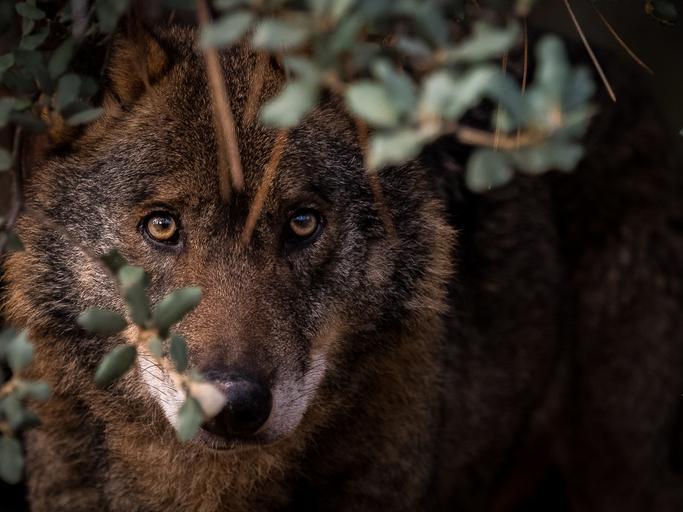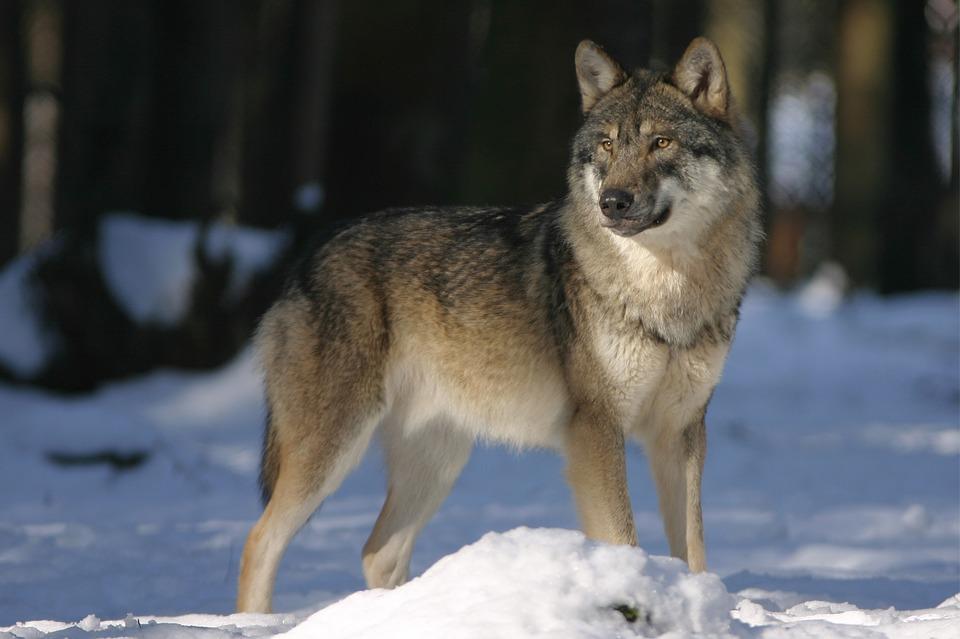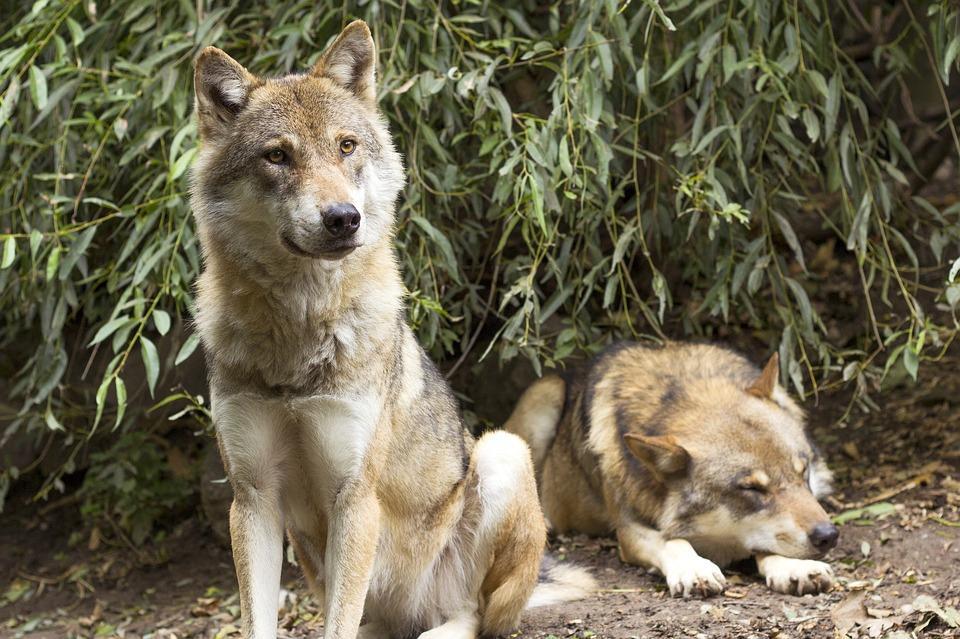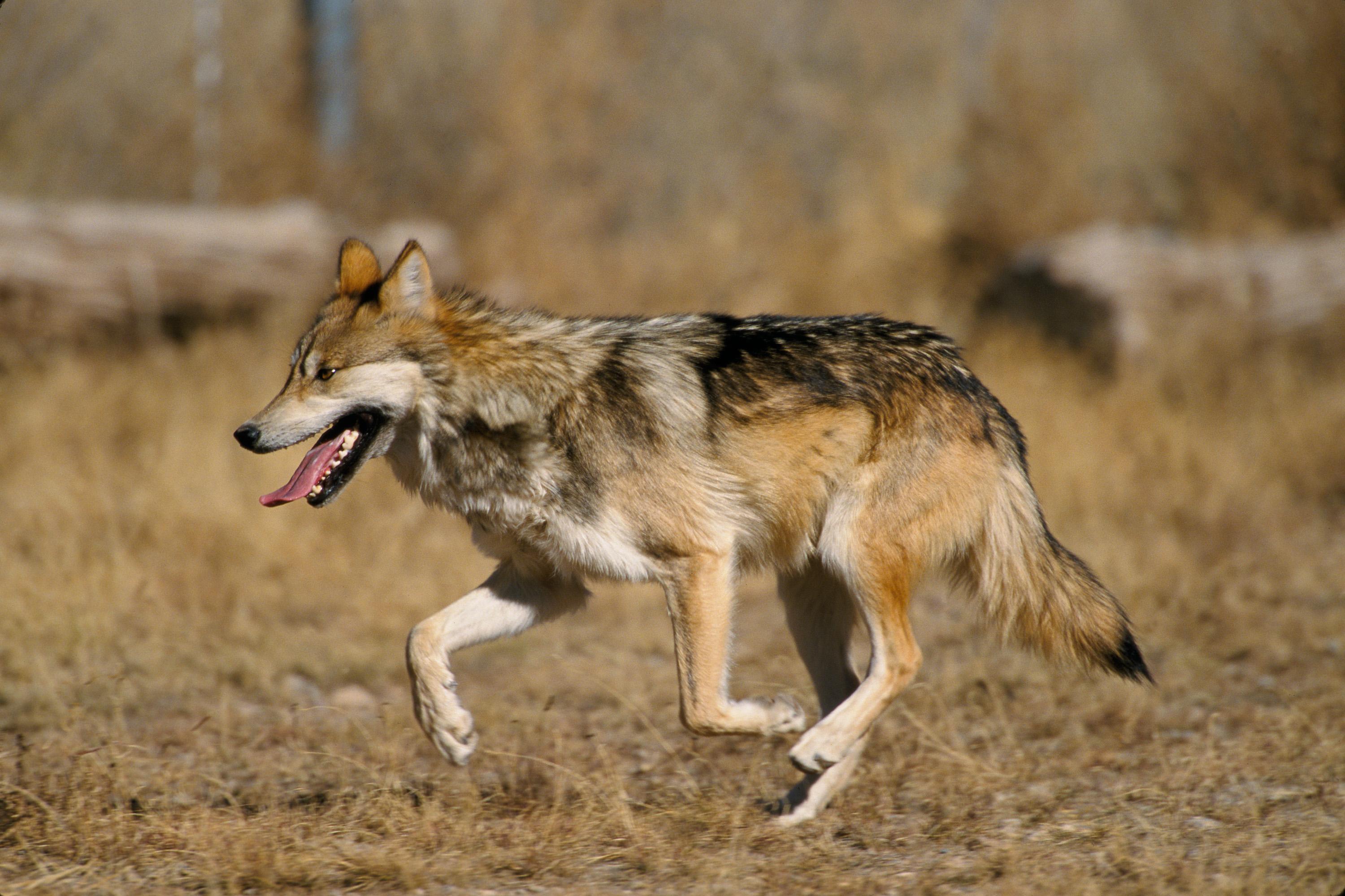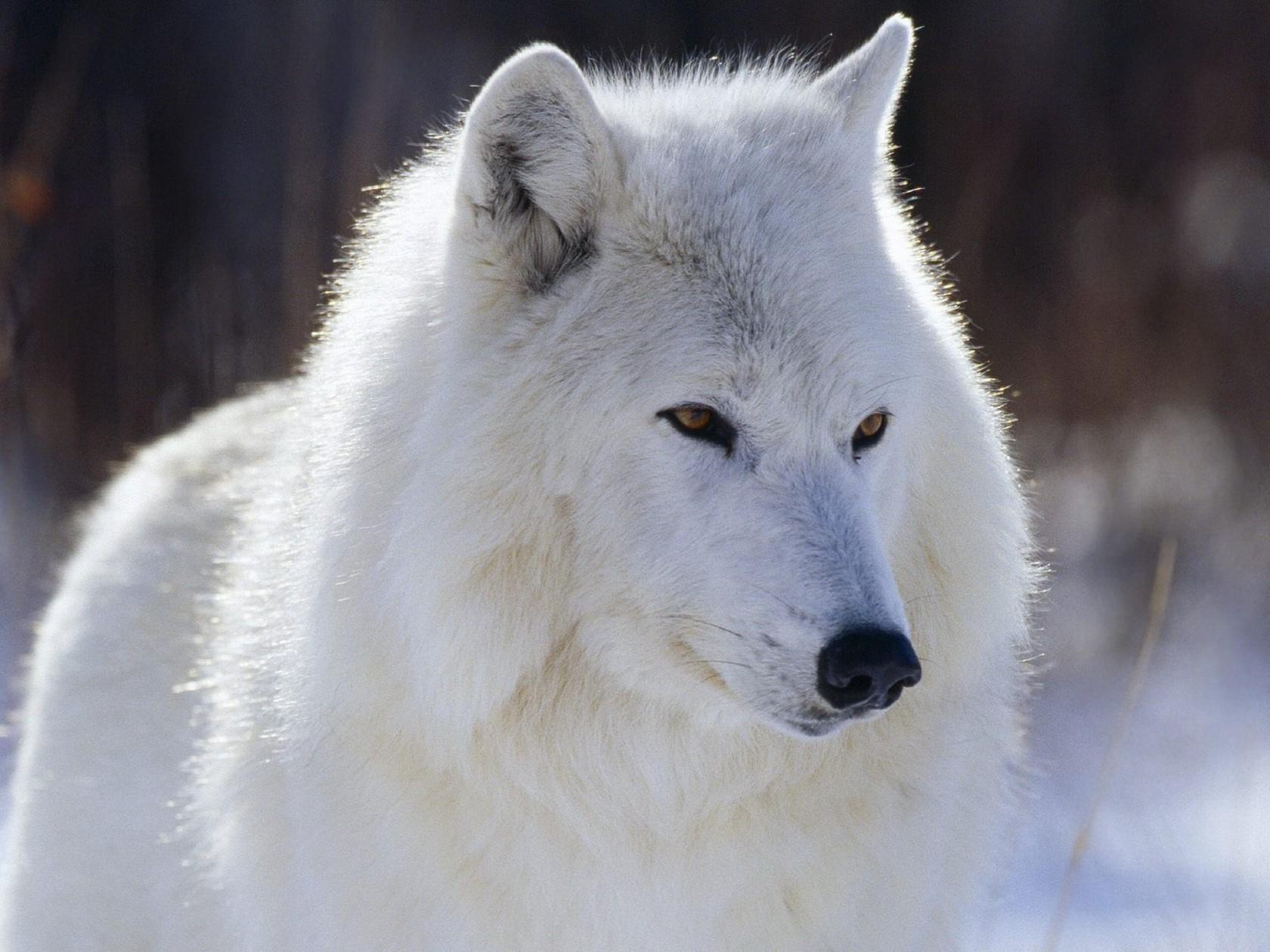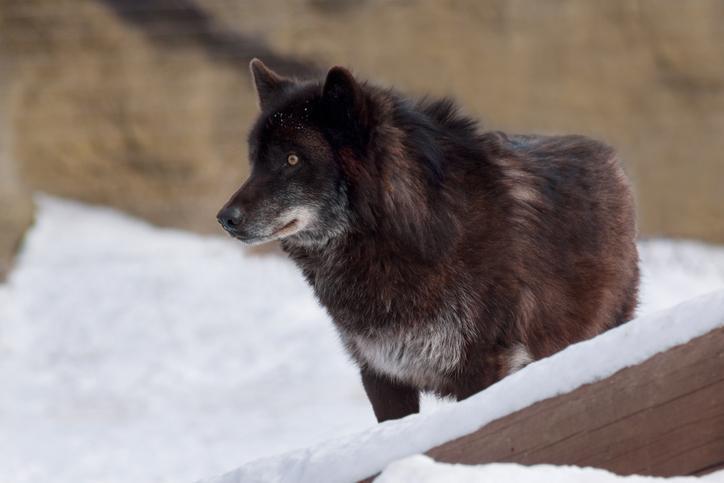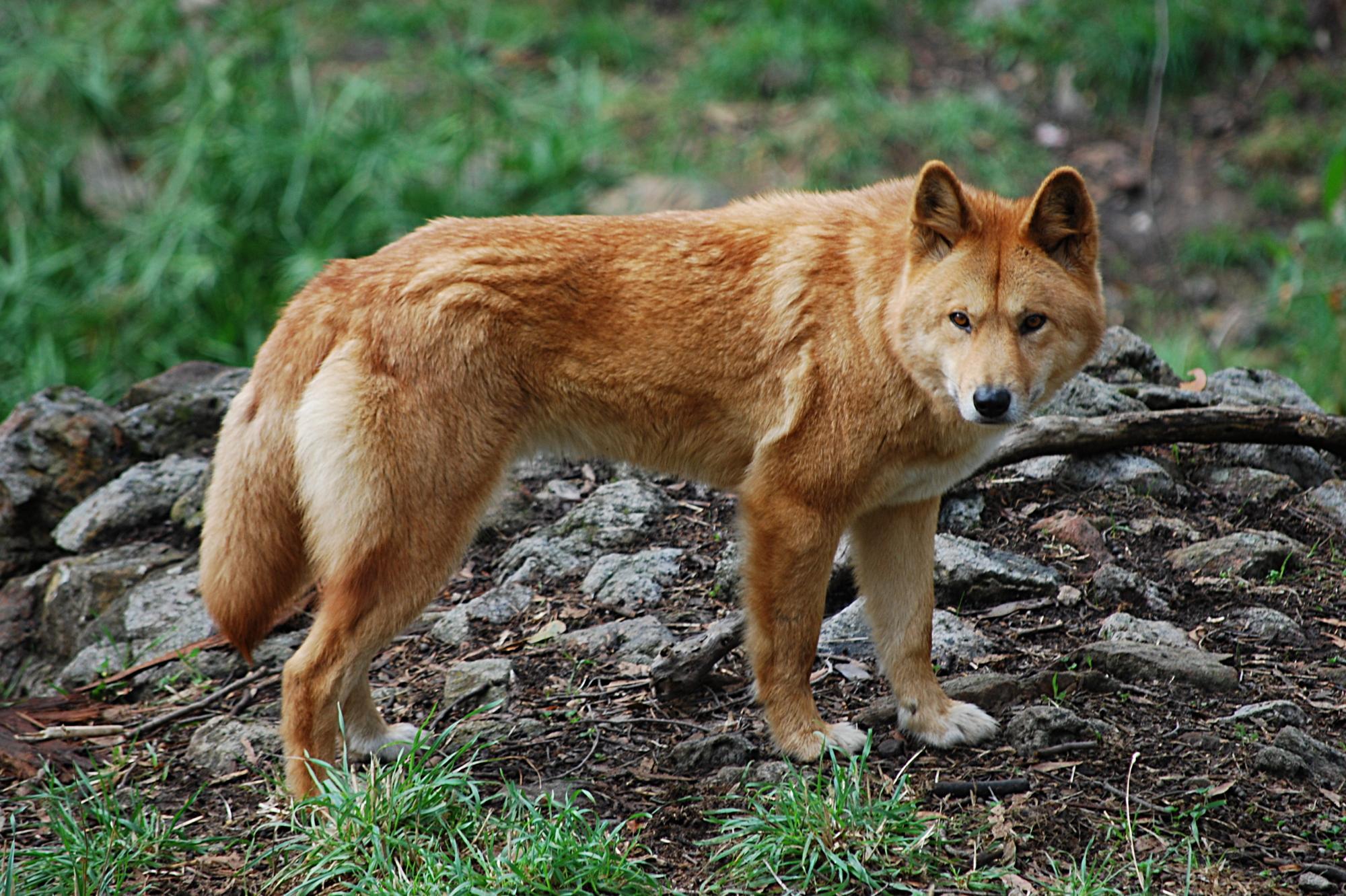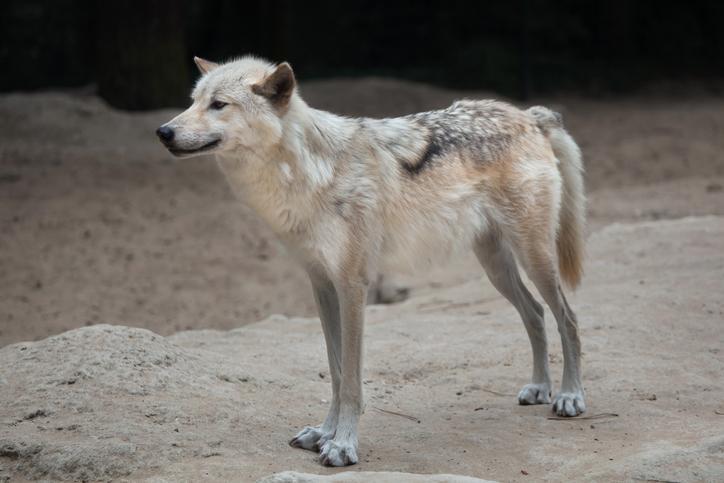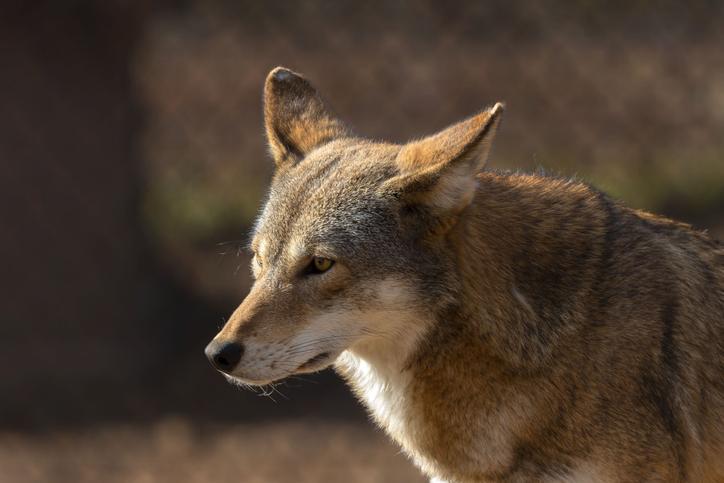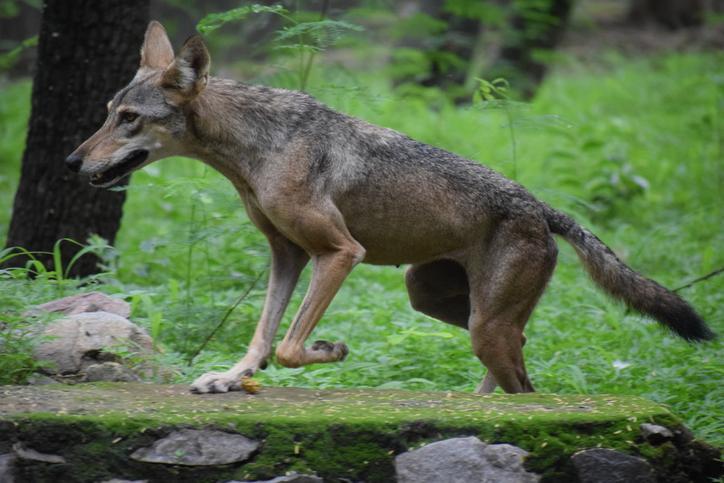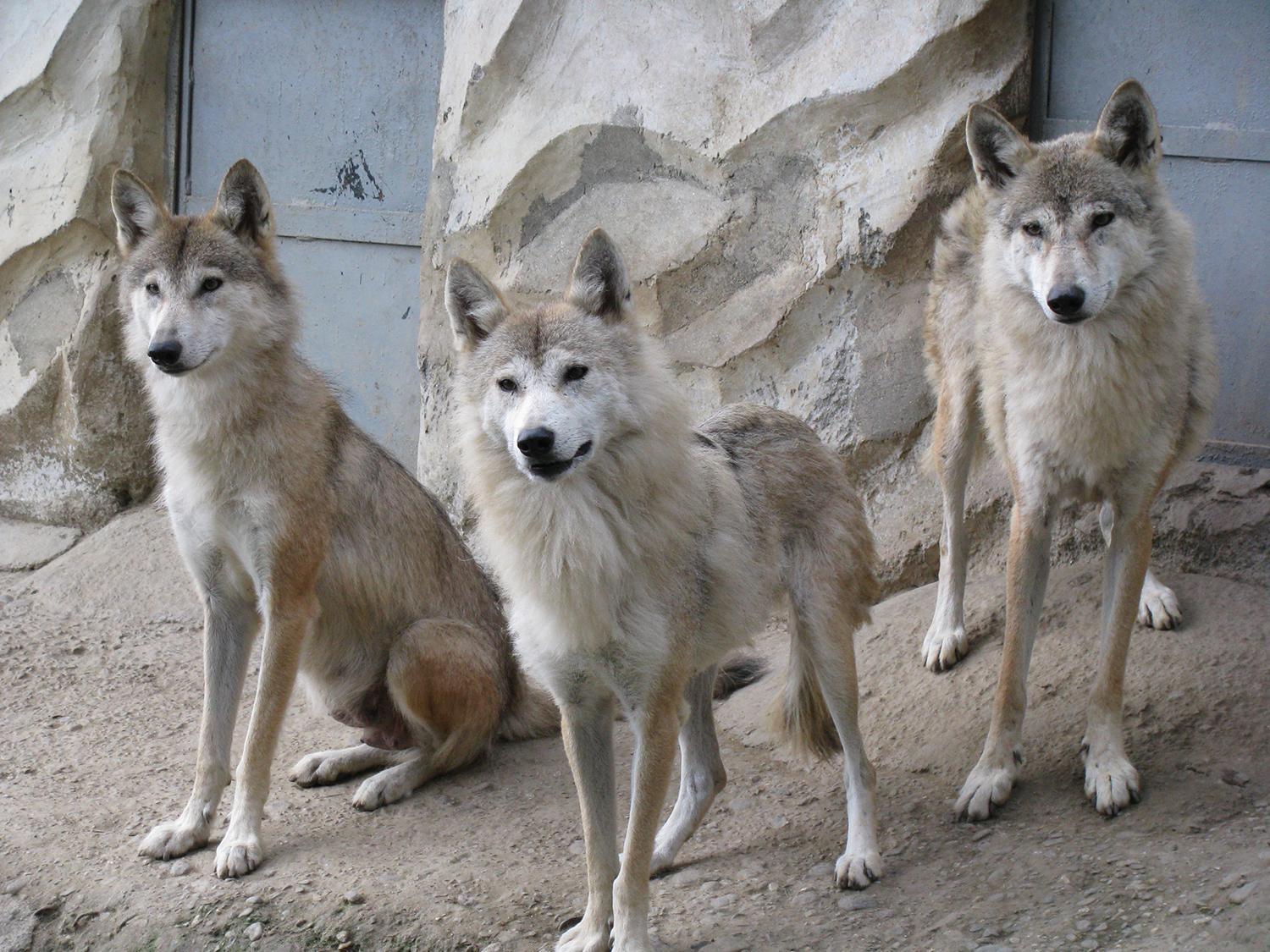Different Types of Wolves and Their Characteristics


The wolf is a carnivorous animal which is considered a relative of the domestic dog (Canis lupus familiaris). While this is true, the extent of their connection is complicated and you can read up about the genetic history of dogs to learn more. While we know there are many different types of dog breed, not as many are aware of the variety of wolf specimens which exist (and many which unfortunately no longer exist).
AnimalWised brings you an extensive list of the different types of wolves and their characteristics to help fill in the gaps. These animals are distributed all over the world, most if which occupy the highest places in the food chain. They are fascinating creatures which deserve our attention if we are to keep them around.
- Characteristics of the wolf
- How many types of wolf are there?
- Gray wolf (Canis lupus)
- Iberian wolf (Canis lupus signatus)
- Arctic wolf (Canus lupus arctos)
- Arabian wolf (Canis lupus arabs)
- Black wolf
- Eurasian wolf (Canis lupus lupus)
- Tundra wolf (Canis lupus albus)
- Mexican wolf (Canis lupus baileyi)
- Baffin Island wolf (Canis lupus manningi)
- Interior Alaskan wolf (Canis lupus pambasileus)
- Dingo (Canis lupus dingo)
- Vancouver Island wolf (Canis lupus crassodon)
- Northwestern wolf (Canis lupus occidentalis)
- Red wolf (Canis rufus)
- Ethiopian wolf (Canis simensis)
- African golden wolf (Canis anthus)
- Indian wolf (Canis indica)
- Eastern Wolf (Canis lycaon)
- Himalayan wolf (Canis himalayensis)
- Domestic dog (Canis lupus familiaris)
Characteristics of the wolf
The wolf has existed on earth for approximately 800,000 years. In their origins, wolves were distributed over the majority of the world, including the Americas, Asia and Europe. The development of civilizations and natural changes in the environment has changed the picture of wolf distribution. This may lead you to ask, ‘where do wolves live now?’ Wolves in the wild are mainly distributed in the United States of America and parts of Europe. The main distribution of wolves in Europe is in Russia and surrounding countries where wolf packs are still found.
Although wolves do have many similarities with certain domestic dog breeds, there are also important differences. Depending on the breed of wolf, they are generally large than dogs, weighing between 40 and 80 kilos. They have a very strong musculature with a powerful jaw and very sharp teeth which allow them to hunt and survive in often challenging environments.
Certain wolf breeds can reach speeds of up to 40 mph. They can also jump high, something necessary for the often mountainous habitats in which they dwell. Their sense of smell is keenly developed and their eyes are well-suited to seeing in low-light environments. This is due to a reflective membrane on the back of their eyes known as the tapetum lucidum.
A wolf's fur is dense, thick and coarse. It needs to be durable to protect them from adverse weather conditions, protect against attack and even help in serving as camouflage. While these are some general characteristics of wolves, we continue below with different breeds of wolves and their specific information.
How many types of wolf are there?
There are several species and subspecies of wolf distributed in different parts of the world, but how many are there? In the genus Canis to which wolves belong, there are 16 different species, including wolves, dogs, jackals (Canis mesomelas), coyotes (Canis simensis) and others. Among them is the gray wolf (Canis lupus), in turn, has 37 different subspecies. Included in these subspecies is a cross between the gray wolf and the domestic dog.
Since not all of the species registered under the genus Canis are wolves, we still need to know how many types of wolf there are. According to official registries, as shared in the Comparative Toxicogenomics Database (CTD)[1], the following are the only species of extant wolf species:
- Canis anthus
- Canis indicates
- Canis lycaon
- Canis himalayensis
- Canis lupus
- Canis rufus
There are different subspecies within these main wolf species. Next we share some valuable information about these different types of wolves.
Gray wolf (Canis lupus)
The gray wolf is a species of carnivorous canine from which descend many subspecies. At present, this species is mainly distributed throughout the United States of America where it is one of the largest natural wild predators. They are also known as the timber wolf.
Gray wolves are characterized by living in packs, governed by a particular social hierarchy. Thanks to this type of organization, they can hunt and eat together more successfully. This behavior, however, has greatly reduced their ability to live in wider habitats. The reason is because this efficient method of hunting make them a danger to farms and livestock. There are more than 20 gray wolf species in the world, although some sources such as the Journal of Mammology[2], cite up to 38.
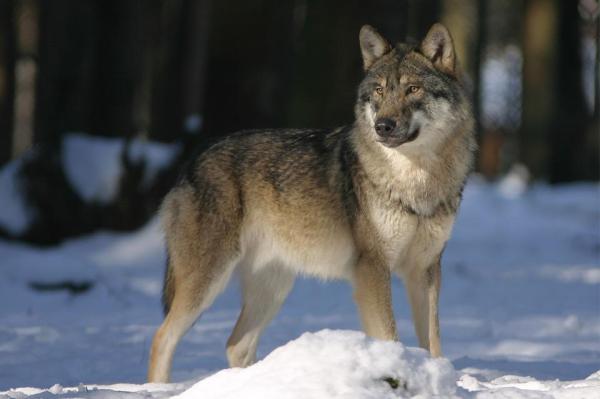
Iberian wolf (Canis lupus signatus)
The Iberian wolf (Canis lupus signatus) is a subspecies of Canis lupus endemic to the Iberian Peninsula. Due to its location, it is also often known as the Spanish wolf. They are characterized by having a slighter frame than some bigger wolves, but they reach an average weight of about 50 kilos. They present with a very distinctive coat which can be chestnut or beige on the belly, black towards their back and with lighter markings from the middle to the tail.
Th Iberian wolf is one of the most common types of wolf in Spain. Their carnivorous diet is made up of hunting sheep, rabbits, wild boar, reptiles and some birds. They may eat a small amount of vegetation, but only around 5%. They are considered a vulnerable species, yet hunting is not completely illegal in Spain. Some are granted licenses to hunt them for the purposes of protecting livestock, although fortunately these are not commonly issued.
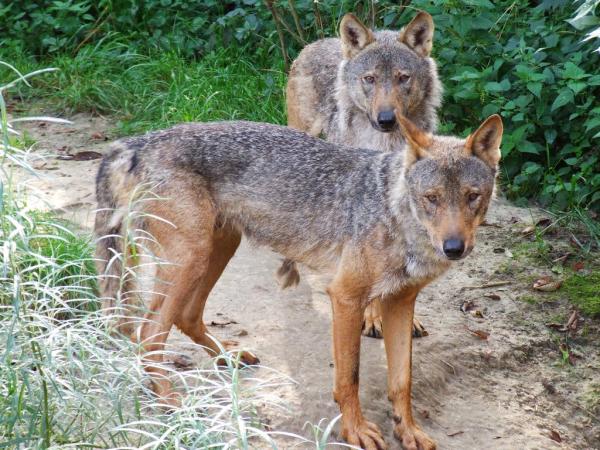
Arctic wolf (Canus lupus arctos)
Heading to slightly colder climes, we find the Arctic wolf. This specimen only lives in Canada and Greenland. Its size is smaller than that of other wolves, weighing around 45 kilos in most cases. As a way of adapting to its cold environment, the Arctic wolf has a white to yellowish coat which allows them to blend more easily into their surroundings. The Arctic wolf is a subspecies of the gray wolf.
This species usually lives in rocks and caves, feeding mainly on other animals found in Arctic areas. These include moose, oxen and caribou as well as hunting seals and partridges.
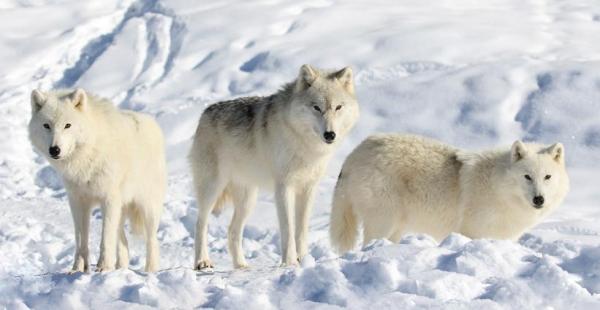
Arabian wolf (Canis lupus arabs)
Our next type of wolf breed is the Arabian wolf, another subspecies of the gray wolf distributed in the Sinai Peninsula, as well as several countries in the Middle East. It is a desert wolf and is of an even smaller size to the Arctic wolf, weighing around 20 kilos. It feeds mainly on carrion and smaller mammals such as hares.
Different from most other species of wolf, the Arabian wolf does not live in packs, nor does it howl. Their coat is sepia colored with chestnut and paler tones to camouflage in sandy terrain.
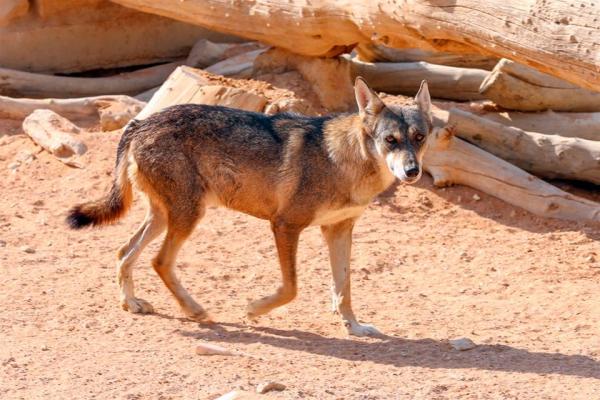
Black wolf
The black wolf is not a distinct species, but is a melanistic specimen of the gray wolf. This means it has a genetic variation which means their coat is black instead of gray. Otherwise the black wolf has the same distribution and behavior of the gray wolf. It is similar to how silver foxes are melanisitc red foxes.
The belief is that the genetic mutation which lead to their black coat came from cross-breeding with domestic dogs. In the past, however, there was a black wolf known as the Florida wolf (Canis lupus floridanus) which was sadly declared extinct in 1908.

Eurasian wolf (Canis lupus lupus)
The Eurasian wolf is the most widespread subspecies of the gray wolf in existence. This wolf type inhabits a large part of the European continent, but can also be found extensively in parts of Asia such as China. Among European predators, it is one of the largest, weighing up to 70 kg. Their coat is gray, with a cream undercarriage. The Eurasian wolf hunts hares, deer, elk, goats and wild boar.

Tundra wolf (Canis lupus albus)
Among wolf types which inhabit cold areas is the Tundra wolf. It can be found in the Russian tundra, specifically the Siberian region reaching up to Scandinavia. They weigh up to 50 ks and have a long, thick and fluffy coat which allows them to survive in freezing cold weather.
The tundra wolf feeds on reindeer, hares and Arctic foxes. Additionally, they are a nomadic species which travels far to follow prey animals and sustain their diet.

Mexican wolf (Canis lupus baileyi)
The Mexican wolf is a subspecies of gray wolf which inhabits North America. It prefers to live in deserts and temperate forest areas. Their coat can display various colors, including cream, yellow and black.
The Mexican wolf feeds on cattle, hares, sheep and rodents. Due to attacks on cattle, the Mexican wolf has been hunted to near extinction. There are programs which have been established to continue the species. According to the most recent census, there are about twice as many Mexican wolves in captivity than in the wild.

Baffin Island wolf (Canis lupus manningi)
The Baffin Island wolf (Canis lupus manningi ) is a rare subspecies that inhabits only one place on Baffin Island inCanada. Its fur and size are similar to those of the Arctic wolf. Little is known about this species, but we do know it feeds on foxes and hares.
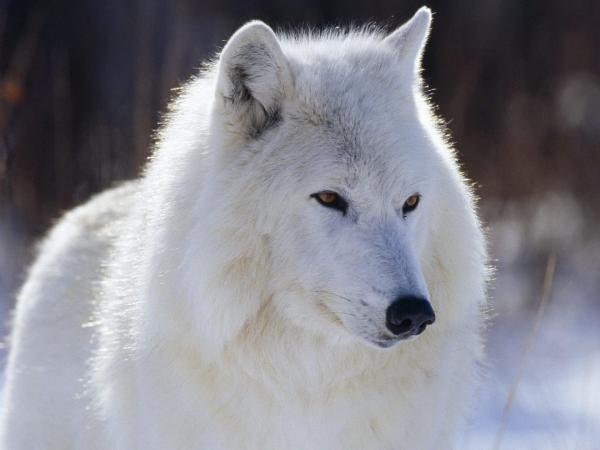
Interior Alaskan wolf (Canis lupus pambasileus)
Known as the Yukon wolf or, rarely, the black wolf of Alaska, this type of wolf is named after its habitat. The Yukon is the northernmost territory of Canada and is, therefore, one of the coldest parts of the country. The Interior Alaskan wolf is one of the largest wolves in the world as it can weigh up to 70 kg.
Although known for having specimens of a completely black color, the Yukon wolf can be of various shades. These shades include gray, beige and rust.

Dingo (Canis lupus dingo)
The dingo (Canis lupus dingo) is a controversial addition to our list of different wolf types. They are definitely related, but some will consider them a type of dog, others wolf and others still a distinct species of itself. We have included it to be comprehensive.
The dingo is relatively small, weighing around 32 kg and can be found mainly in Australia and parts of Asia. They are a wild animal, it is not illegal to keep them as companion animals in some parts of Western Australia. However, wild animals cannot always be tamed and it is important they are well-socialized when young.
The dingo's coat has a uniform color which varies between reddish brown and yellow. There are rare instances of albinism in dingoes.
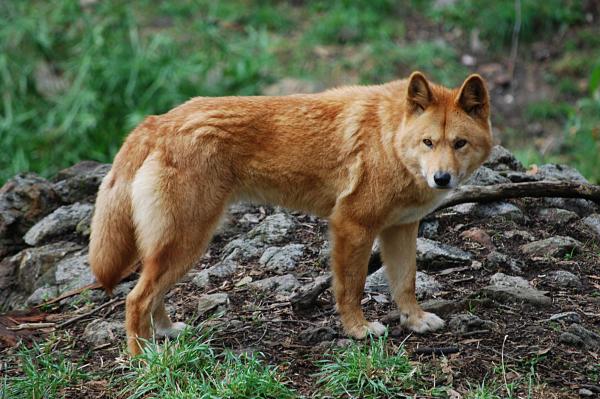
Vancouver Island wolf (Canis lupus crassodon)
The Canis lupus crassodon is endemic to Vancouver Island, Canada . Like the arctic wolf, it has a white coat that allows it to blend in with its snowy environment. Although little information is available on this type of wolf, it is known to live in large packs of up to 35 individuals and it rarely approaches areas populated by humans. Perhaps this is one of the reasons it fortunately does not have population concern as with many other wolf types on our list.
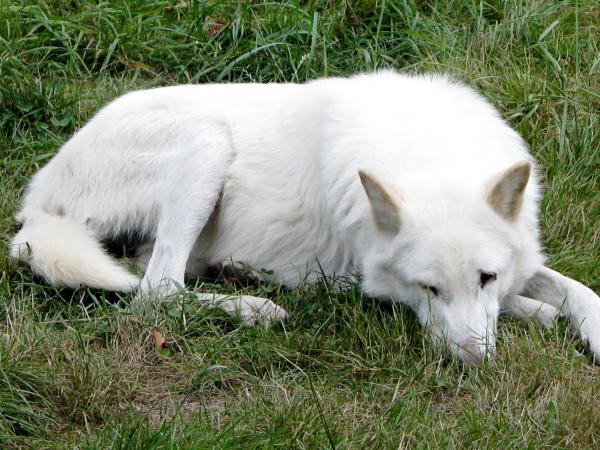
Northwestern wolf (Canis lupus occidentalis)
Also known as the Mackenzie Valley wolf or Alaskan timber wolf, the Northwestern wolf inhabits the coasts of Arctic glacier oceans of western North America. This is one of the largest wolves on our list in terms of size as it measures up to 85 cm long. Their weight, however, is average at around 45 to 50 kilos.
The Northwestern wolf's coat can appear in black, gray, chestnut or white colors. Its diet is varied, feeding on oxen, hares, fish, reptiles, deer and elk.

Red wolf (Canis rufus)
Moving on from subspecies of the gray wolf, we find the Canis rufus, commonly known as the red wolf. This is one of the rarest wolf breeds, found in small pockets of Mexico, Canada and the USA. The red wolf is in critical danger of extinction due to various reasons, mainly as a result of human intervention. This includes hunting of its food resources, introduction of rival species into its habit and the detrimental effects of human infrastructure (e.g. road construction).
The red wolf is smaller at about 35 kilos and displays a spotted red, gray and amber coat. They feed on deer, raccoons and rodents.

Ethiopian wolf (Canis simensis)
Also known as the Abyssinian wolf or Simien jackal, the Ethiopian wolf is also a threatened species. We include them on our list of different wolf types, but we need to make it clear this is not actually a wolf. It is a jackal, but it closely resembles their lupine cousins. They inhabit the mountains of Ethiopia, living in high altitudes above 3000 meters.
The Ethiopian wolf is a small predator, weighing only about 10 to 20 kg. Their fur is reddish with white spots under their neck and black on their tail. Like wolves, they live in packs and have intricate hierarchies. Habitat destruction and hunting to protect livestock are seriously depleting their wild populations.
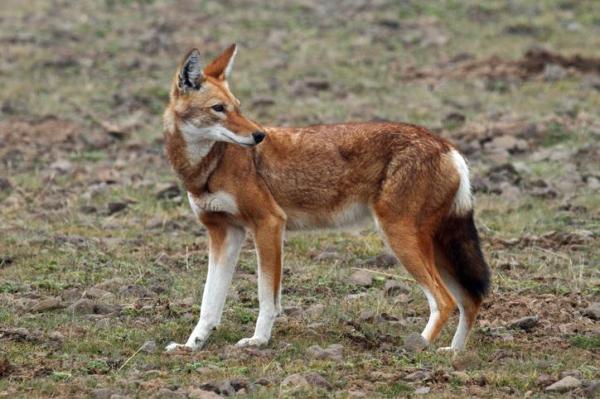
African golden wolf (Canis anthus)
The African golden wolf (Canis anthus) is a species of wolf found on the African continent. This wolf is adapted to the semi-desert climate, but prefers to live in areas with nearby water sources. This wolf is also known as the Egyptian jackal and has had a tricky taxonomic history. Genomic studies have found it to be majority gray wolf with some Ethiopian wolf lineage
As for its physical characteristics, its size is smaller than most other other wolves. They weigh around 15 kilos and have a dark coat on the back and tail. Their legs and abdomen are usually sandy colored, which gives them their golden appearance.

Indian wolf (Canis indica)
The Indian wolf (Canis indica) is a native of Israel, Saudi Arabia, India and Pakistan. They prefer to live in semi-desert areas. They have a more stylized appearance than some other wolf species. They are lithe and slender, weighing only around 30 kg. Their coat is tawny, allowing them to blend in with the sandy and rocky areas of their native habitat. The Indian wolf feeds on cattle. As cattle are sacred animals in India, this makes them particularly vilified and it has been essentially persecuted for several centuries.

Eastern Wolf (Canis lycaon)
Also known as the Algonquin wolf, the Eastern wolf inhabits the southeasternmost part of Canada. They have a longer coat than some wolves with a hard texture and a patchwork of black and white all over their body.
This wolf species inhabits forested areas of its native Canada where they feed on smaller vertebrates and live in packs. They are another type of wolf in danger of extinction, especially due to deforestation. Fragmentation of populations have resulted in this breed living in much smaller packs.
Himalayan wolf (Canis himalayensis)
The Himalayan wolf (Canis himalayensis) is a native of Nepal and the north of India . They live in small communities and there is currently a small number of adult specimens. Unsurprisingly being named after the Himalayas, they live in mountainous regions, but their population in the wild is relatively unknown.
As for its appearance, it is a small and thin wolf. Its fur is hard and comes in clear shades of chestnut, gray and cream.
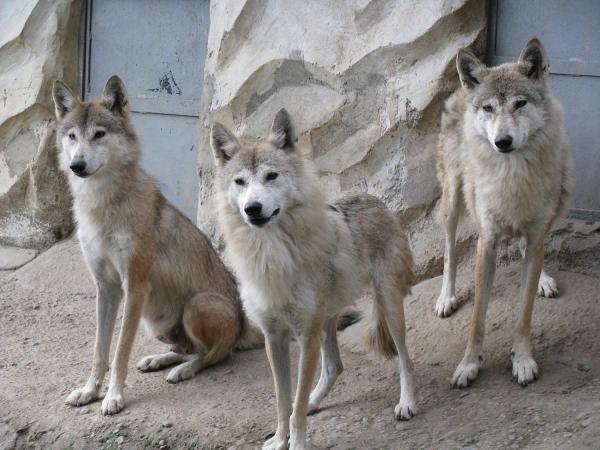
Domestic dog (Canis lupus familiaris)
The domestic dog (Canis lupus familiaris) is one of the most widespread animals in the world. This is due to their popularity as a companion animal. Their physical characteristics vary among the different recognized breeds that exist, which present wide differences in size, color and coat type, personality, life expectancy and many others.
The domestic dog is a different subspecies. Given the most recent theories, it has been suggested their origins are the result of crosses between dingos, basenji and jackals. However, 14,900 years ago the lineage of dogs and wolves separated. This means, rather than dogs being descended from wolves, they share a common ancestor. From this separation, each species developed differently, but it was the dog which managed to be domesticated.
If you want to read similar articles to Different Types of Wolves and Their Characteristics, we recommend you visit our Facts about the animal kingdom category.
1. Comparative Toxicogenomics Database. (2019). Canis. Retrieved July 2, 2019.
http://ctd.mdibl.org/detail.go;jsessionid=5DC930FC0E0FF08547494A0755523334?type=taxon&acc=9611#tree9611
2. Wilson, D. E., & Reeder, D. M. (2005). Mammal Species of the World: A Taxonomic and Geographic Reference (3rd Edition). Baltimore, MD: Johns Hopkins University Press.
https://academic.oup.com/jmammal/article/88/3/824/1073866
- Ministry of Environment. Conservation status of the Iberian wolf . Spain. Retrieved July, 2 from: https://web.archive.org/web/20160304123529/http://www.udc.es/dep/bave/jfreire/CERA05_06/Ensayos/9_Conservacion%20lobo%20iberico.pdf
- Red List of Threatened Species. Canis rufus . Retrieved from: https://www.iucnredlist.org/es/species/3747/119741683
- Derr, Mark. (2009, February 5). New World wolves and coyotes owe debt to dogs . The New York Times. Query: https://www.nytimes.com/2009/02/06/science/06wolves.html?ref=todayspaper
- Government of Mexico Mexican wolf. Retrieved July, 2 from: https://www.biodiversidad.gob.mx/especies/especies_priori/fichas/pdf/loboMexicano.pdf
- Gannon, Megan. (2014, July 14). First litter of wild wolf pups born in Mexico . Live Science. Retrieved July, 2 from: https://www.livescience.com/46898-mexico-first-wild-born-wolves.html
- Integrated Taxonomic Information System. Canis lupus manningi . Retrieved July, 2 from: https://www.itis.gov/servlet/SingleRpt/SingleRpt?search_topic=TSN&search_value=726833#null
- Integrated Taxonomic Information System. Canis lupus dingo. Retrieved July, 2 from: https://www.itis.gov/servlet/SingleRpt/SingleRpt?search_topic=TSN&search_value=726820#null
- Integrated Taxonomic Information System. Canis lupus crassodon. Retrieved July, 2 from: https://www.itis.gov/servlet/SingleRpt/SingleRpt?search_topic=TSN&search_value=726819#null
- Integrated Taxonomic Information System. Canis lupus occidentalis. Retrieved July, 2 from: https://www.itis.gov/servlet/SingleRpt/SingleRpt?search_topic=TSN&search_value=726837#null
- Integrated Taxonomic Information System. Canis lupus pallipes. Retrieved July, 2 from: https://www.itis.gov/servlet/SingleRpt/SingleRpt?search_topic=TSN&search_value=726839#null
- Comparative Toxicogenomics Database. Canis






